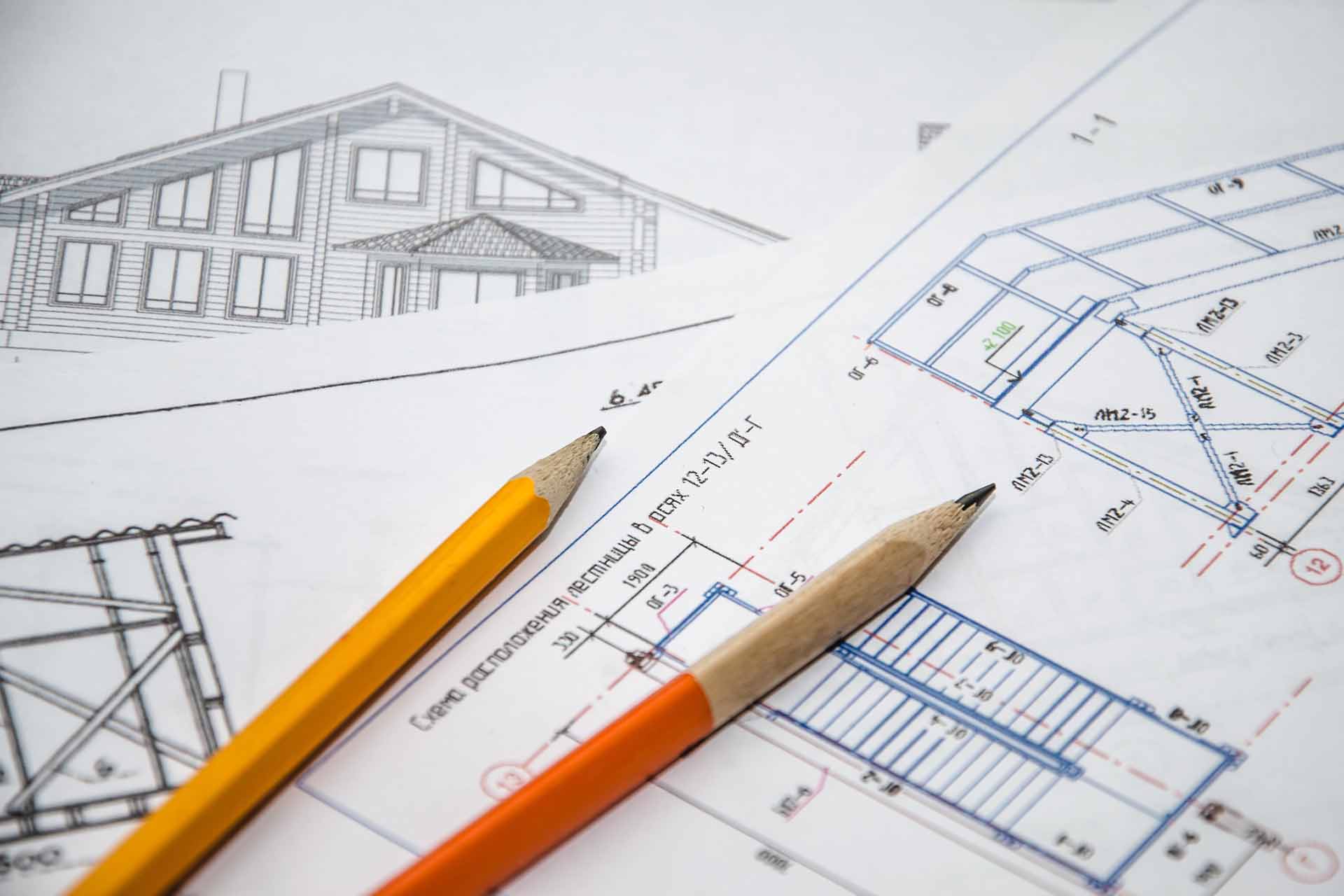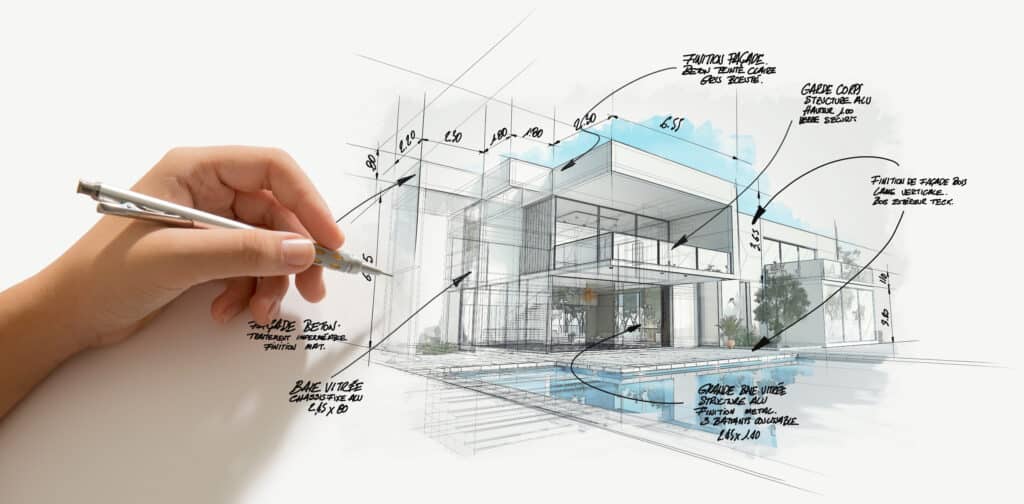Architect Workflow Enhancement for Quicker Project Delivery
Architect Workflow Enhancement for Quicker Project Delivery
Blog Article
Recognizing the Diverse Profession Paths Available for Aspiring Architect
As a hopeful Architect, you have a world of job paths awaiting you. Each path uses unique difficulties and opportunities to use your creative thinking and technical expertise. Whether you're drawn to standard architecture or the nuances of lasting design, there's a specific niche that straightens with your rate of interests. Recognizing these varied alternatives can form your professional trip, yet which direction will you select to discover first?
Typical Architecture: Designing Structures and Frameworks
Traditional architecture concentrates on creating structures and frameworks that mix capability with visual appeal. As you explore this field, you'll appreciate the elaborate equilibrium in between kind and objective. You'll learn to draw inspiration from historical styles, incorporating elements like symmetry, materials, and craftsmanship. Your designs can reflect cultural heritage, showcasing local traditions while meeting modern requirements.
You'll establish skills in drafting, model-making, and site evaluation, enabling you to visualize and communicate your ideas properly. Engaging with customers, you'll require to comprehend their vision and translate it into possible designs.
Furthermore, constructing codes and sustainability techniques are necessary in your work, ensuring your frameworks are risk-free and ecologically friendly. As you expand in your occupation, you'll find possibilities in property, industrial, and even repair jobs, each offering unique obstacles. Accepting traditional style leads the way for a satisfying career that pays tribute to the past while shaping the future.
Urban Preparation: Shaping Areas and Public Spaces
As a hopeful Architect, you can play a vital role as a city planner, changing how neighborhoods interact and work. By using neighborhood involvement methods, you'll ensure that citizens have a voice fit their atmosphere. And also, integrating lasting layout principles will certainly aid create areas that not just meet today's requirements yet also secure the future.
Duty of Urban Planners
While numerous might think of engineers as the sole dreamers behind structures, city coordinators play a necessary function in shaping the broader landscape of communities and public rooms. By teaming up with different stakeholders, you'll assist design parks, transport systems, and household locations that promote social communication and access. Your experience in spatial style and neighborhood dynamics enables you to imagine future growth while maintaining cultural heritage.
Community Involvement Methods
Effective area interaction techniques are vital for city coordinators to assure that the voices of citizens are heard and valued in the preparation process. To cultivate significant dialogue, you must prioritize open discussion forums and workshops where neighborhood participants can reveal their concepts and issues. Usage surveys and social media sites to reach a more comprehensive audience, making certain diverse viewpoints are included. Teaming up with local companies can enhance depend on and facilitate deeper links. It's essential to give clear information about decision-making processes and proposed tasks, allowing citizens to feel educated and encouraged. By actively incorporating and paying attention responses, you'll create areas that mirror the community's needs, eventually leading to more effective and lasting urban atmospheres. Welcome openness and continuous dialogue for enduring influence.
Sustainable Design Principles
When designing urban spaces, including lasting style principles is important for producing atmospheres that flourish both ecologically and socially. You should begin by concentrating on energy efficiency, utilizing products that lower waste and promote recycling. Consider incorporating green rooms, like parks and yards, to improve biodiversity and improve air quality. Promoting walkability and public transport can decrease dependence on cars and trucks, promoting a healthier neighborhood.
Creating with water conservation in mind is likewise key-- assume regarding rainfall gardens and absorptive surfaces to handle stormwater. Involving neighborhood members during the preparation process warranties that the spaces you develop meet their requirements and encourage social interaction. By welcoming these principles, you'll add to vibrant, sustainable city landscapes that benefit everybody.

Landscape Architecture: Developing Sustainable Outdoor Settings
As you check out landscape architecture, you'll uncover necessary design concepts that produce functional and beautiful exterior areas. Lasting methods play an important duty in guaranteeing these environments prosper while minimizing ecological influence. Plus, you'll locate a range of job chances that permit you to make a genuine distinction in how individuals interact with nature.
Style Concepts in Landscape
Comprehending style concepts in landscape architecture is vital for producing lasting outside atmospheres that balance with nature. You'll need to contemplate elements like proportion, balance, and scale to guarantee your designs really feel natural and inviting. Additionally, pay attention to seasonal changes, making with products that match the surroundings year-round.
Lasting Practices Review
Sustainable practices in landscape style not just focus on appearances but likewise focus on eco-friendly health and resource conservation. You can create rooms that advertise soil wellness, such as practicing and utilizing natural products permaculture concepts. Inevitably, these practices guarantee your designs benefit both people and the atmosphere for years to come.
Occupation Opportunities Expedition
With a solid structure in lasting practices, landscape architecture supplies a range of profession courses that enable you to make a meaningful influence on the atmosphere. Urban planners usually work together with landscape architects to develop green rooms in metropolitan setups, improving city livability. If you're enthusiastic regarding education and learning, think about becoming a landscape design educator, inspiring future generations.
Lasting Style: Concentrating on Eco-Friendly Practices
As you explore your job in style, embracing eco-friendly methods can set you apart in a competitive field. Sustainable layout concentrates on producing buildings that lessen ecological impact while improving owner wellness. By including renewable materials, energy-efficient systems, and lasting structure techniques, you'll contribute to a greener future.
Begin by obtaining knowledge of eco-friendly certifications like LEED or BREEAM, which can bolster your credentials. Take into consideration exactly how natural light, air flow, and thermal efficiency can my blog enhance style. Team up with designers and environmental specialists to introduce remedies that reduce waste and conserve resources.
Do not neglect the value of area participation-- engaging local stakeholders can influence styles that balance with the atmosphere. As customers progressively focus on sustainability, your knowledge in environment-friendly techniques will certainly not just bring in projects but likewise meet your interest for liable style. Welcome this crucial aspect of the profession, and watch your career thrive.
Historic Conservation: Securing and Bring Back Cultural Heritage
While you begin on your building trip, consider the essential role of historical conservation in keeping our social heritage. This field focuses on the protection and restoration of significant structures, websites, and frameworks that tell the stories of our past. By taking part in historical preservation, you'll help guard the building tradition that shapes area identification.
As a historical conservation Architect, you'll analyze historic value and examine the condition of frameworks. You'll work very closely with historians and conservationists to ensure genuine remediation techniques are utilized. This career path permits you to blend creative thinking with research study, allowing you to create services that value original materials and workmanship.
Your work not just adds to sustainability by reusing existing structures but likewise fosters a feeling of satisfaction within communities. Welcoming this course will aid you become a guardian of history, maintaining the stories and visual appeals that enhance our lives.
Inside Design: Enhancing Indoor Spaces
Historic preservation and indoor style both share a dedication to enhancing the built environment, however they concentrate on various aspects. While historic preservation stresses keeping a framework's historic and social worth, indoor architecture zeroes in on enhancing interior rooms for functionality and appearances.
As an aspiring Architect, you'll find that interior design enables you to mix creative thinking with technical skills. You'll design spaces that not only look good but likewise promote convenience and performance. This area entails recognizing just how light, shade, and products connect within a room, influencing state of mind and usability.
You'll deal with various tasks, from residential homes to commercial offices, ensuring that each environment satisfies the requirements of its passengers. By focusing on user experience, you can change insides right into useful and motivating rooms, making a significant impact on how people interact with their surroundings. Embrace the opportunity to enhance indoor settings and form the method people function and live.
Industrial Style: Merging Capability With Aesthetics
Commercial style plays a necessary function in developing items that seamlessly mix visual appeals with capability, making sure that what you use everyday is not only aesthetically enticing however also sensible. As a hopeful Architect, you might immerse on your own in this field, concentrating on developing every little thing from furnishings to customer electronic devices. Your work includes understanding customer needs, products, and manufacturing procedures, allowing you to develop innovative remedies that enhance day-to-day experiences.
In industrial layout, you'll typically collaborate with engineers, online marketers, and suppliers, guaranteeing that your styles are not just beautiful however likewise viable. You'll learn to balance type and feature, focusing on usability without compromising design. By sharpening your skills in mapping out, 3D modeling, and prototyping, you'll be fully equipped to bring your concepts to life. This job course offers a dynamic environment where creativity fulfills practicality, making it a gratifying option for designers thinking about forming the items of tomorrow.
Regularly Asked Inquiries
What Educational Accreditations Do I Required to End Up Being an Engineer?
To become a designer, you'll require a specialist degree in architecture, commonly a Bachelor's or Master's. In addition, you'll need to finish a teaching fellowship and pass the Architect Enrollment Examination to practice legitimately.
Are There Certification Needs for Different Building Career Paths?
Yes, there're accreditation demands for various architectural courses. Architect. You'll need to pass tests, total teaching fellowships, and often pursue specialized training, depending upon your chosen focus, like landscape style, urban layout, or historic conservation
What Software Abilities Are Essential for Engineers Today?

Just How Can I Gain Practical Experience While Studying Style?
You can get functional experience by interning at building firms, taking part in design competitions, offering for area jobs, or collaborating with classmates on real-world projects. These possibilities enhance your abilities and build beneficial links in the sector.
What Work Opportunities Exist Outdoors Traditional Design Firms?
You can explore different work chances outside traditional architecture firms, like metropolitan preparation, interior layout, landscape architecture, building and construction management, genuine estate growth, or perhaps duties in sustainability consulting. Each offers distinct obstacles and rewards.
Whether you're drawn to standard style or the nuances of get redirected here sustainable style, there's a find more niche that lines up with your passions.When making city spaces, integrating sustainable style concepts is crucial for creating settings that flourish both ecologically and socially.As you check out landscape design, you'll find crucial layout concepts that develop gorgeous and practical exterior rooms.Understanding style principles in landscape design is necessary for developing lasting outside atmospheres that integrate with nature.In commercial layout, you'll frequently work together with marketers, designers, and suppliers, guaranteeing that your layouts are not just gorgeous yet additionally feasible.
Report this page